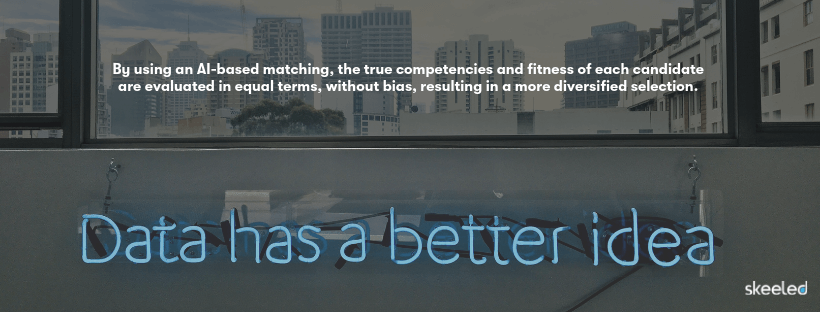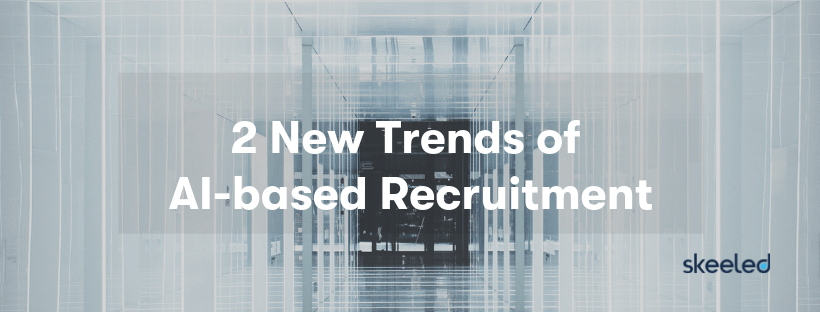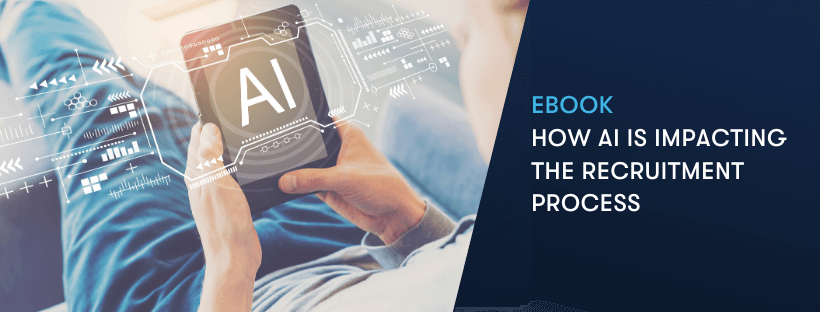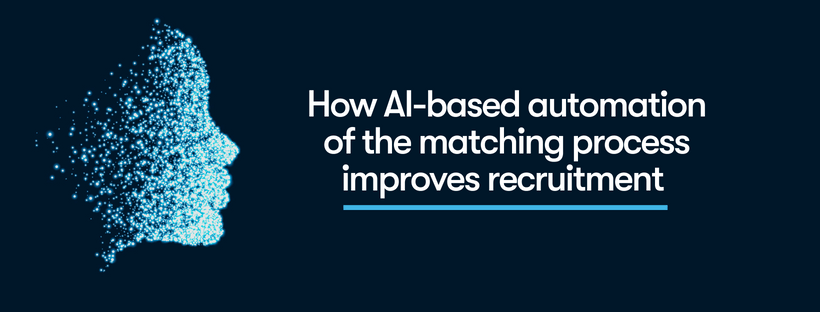In our previous blog article on AI-based recruitment, we discussed how AI can be valuable in the pre-screening of candidates to a given job opening. In reality, not only can it be used to automate the matching of the job‘s most elementary requirements with the candidate’s skills, educations, experience, and languages, but it also helps eliminating the recruiter’s bias and, consequently, increase diversity.
In fact, skeeled’s matching algorithm does not use any information about the gender, age, race, or even the country of the candidates to screen them for any given job offer. The algorithm uses instead information about the education, skills and experiences of the applicant, and complements this information with the results of a personality assessment of the candidate, based on the Big Five Model. At this point, we can argue that by using an AI-based matching the true competencies and fitness of each candidate are being evaluated in equal terms, without bias, resulting in a more diversified selection.
Indeed, we have been told by many recruiters using skeeled that they were very pleased to interview great candidates that were selected by the algorithm that otherwise would most probably not be selected to an interview if using the recruiters’ legacy recruitment processes.
The benefits of an AI-based recruitment go much further than the automation of matching, though. Innovative AI-based solutions are being proposed in such areas as talent sourcing, profile augmentation, intelligent job posting, candidate engagement, automated psicotecnic games and technical challenges, and programmatic advertising. In this article, we’ll overview the use of AI in talent sourcing and profile augmentation.
Talent Sourcing: aiming at passive candidates
Typically, a new job position is opened as a reaction to a specific need in an organisation. However, it is known that this type of reactive hiring leads to high time-to-hire and sometimes results in unfilled job positions, which can greatly increase the hiring costs. At the same time, we know that 80% of the talent pool is open to new opportunities (Forbes). So, a new trend in AI-based recruitment is the automated prospection of passive candidates, i.e., of candidates that are not actively applying to jobs but that are receptive to job offerings.
AI-based talent sourcing is done in two steps: first, web bots crawl the Internet gathering information on possible candidates (e.g., skills and certifications recently posted on professional networks) and the organisations they work on (e.g., are they downsizing, or suffering stock market fluctuations?). Then, sophisticated algorithms cross this information to predict the likelihood of these individuals to change jobs, or even careers, in the short term. Once identified, the passive candidates are inserted in a talent pool available to the recruiters or further automated processes.
Profile Augmentation: filling the gaps
There are recent discussions in the recruitment industry about the success of hiring processes based only on CV analysis. Although some startups offer solutions based entirely on skills assessment through technical games and personality questionnaires, other players offer AI-based recruitment solutions to augment the information provided by candidates in a CV-like format, in an automated way.
These solutions make strong use of machine learning. For example, an algorithm may be designed to automatically identify the main knowledge, skills, and experience associated to the job opening, based not only on this job description, but also on models dynamically built upon past data and learned knowledge. Another part of the algorithm may then search for omissions in the information provided by a specific candidate to this job.
Once the omissions are identified, the recruiter can ask the applicant to fill these omissions. Alternatively, machine learning algorithms with natural language processing (NLP) capabilities can be used to build dynamic open questions to be answered by the candidate, or to train chatbots that engage with candidates, adapting their speech to the candidate and to the job specific characteristics.
Other tools can be used to increase the quantity and quality of information that a recruiter has on candidates. For example, web bots can search public social and professional media profiles for extra information on these candidates, and some video tools using facial and speech recognition software aim at providing clues on the candidates’ body language, language fluency, voice tone, and stress level.
The expansion of AI-based Recruitment
The use of AI in recruitment is expanding at a fast pace, with several different AI-based recruitment tools being released in areas such as automated matching, talent sourcing, profile augmentation, intelligent job posting, candidates engagement, automated psicotecnic games and technical challenges, and programmatic advertising.
The aim of these tools is to assist the recruiters, helping them to take more informed decisions and to increase diversity, and at the same time allowing them to focus on value-added tasks while automating those other tasks that are repetitive and time consuming. These tools also aim at guiding the candidates in all the recruitment process.
This article overviewed the main functionalities associated to AI-based talent sourcing and profile augmentation. Some of these functionalities are already in a mature state, others still need further research and a lot of improvement is expected in the next few years.

Skeeled offers you the perfect opportunity to bring innovation and digitalisation to your hiring. Check our website or our LinkedIn and Facebook pages for further information.
Thanks for reading and see you next time!
Your team here at skeeled



